An inheritor shapes a healthy future for a regional clay sculpture art form through a mixture of tradition and innovation, report Cheng Yuezhu in Beijing and Sun Ruisheng in Taiyuan.
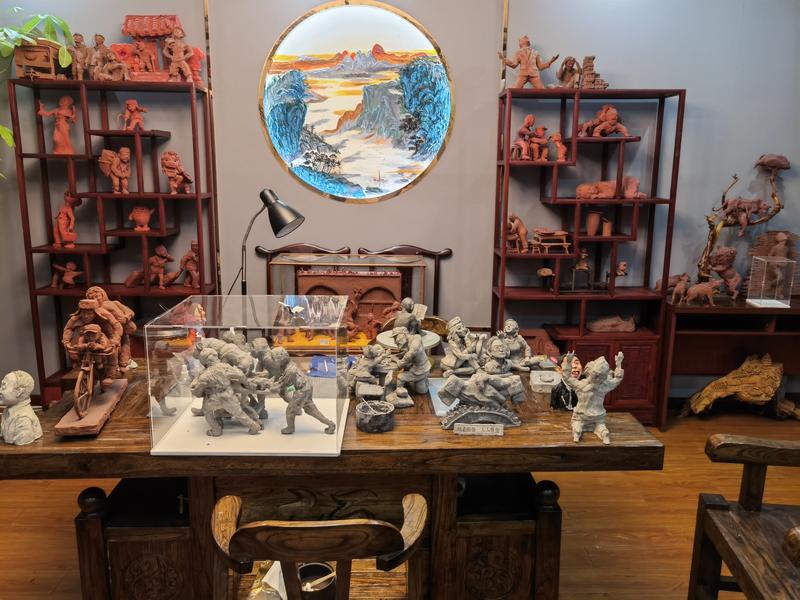 Clay artist Yan Huaqiang's studio in Jinzhong, Shanxi province, with a painting that integrates sculpture techniques displayed on the wall. (PHOTO PROVIDED TO CHINA DAILY)
Clay artist Yan Huaqiang's studio in Jinzhong, Shanxi province, with a painting that integrates sculpture techniques displayed on the wall. (PHOTO PROVIDED TO CHINA DAILY)
For as long as Yan Huaqiang can remember, he has been playing with clay, first learning to mold small animals from his father, and later acquiring the technique and becoming an inheritor of the regional clay sculpture art form.
Yan was born in 1977 in Jinzhong, Shanxi province, into a family where the clay sculpting artisanship has been passed down for four generations. One of four children, he was the only one with a genuine passion for the art form.
"I felt that the sculptures of human figures my father made were very vivid. It seemed to me that with just a few steps, the figures would come to life. I simply became captivated by its magic," Yan says.
The making of human figurines requires advanced skills, so for years his father taught him to make animals out of clay.
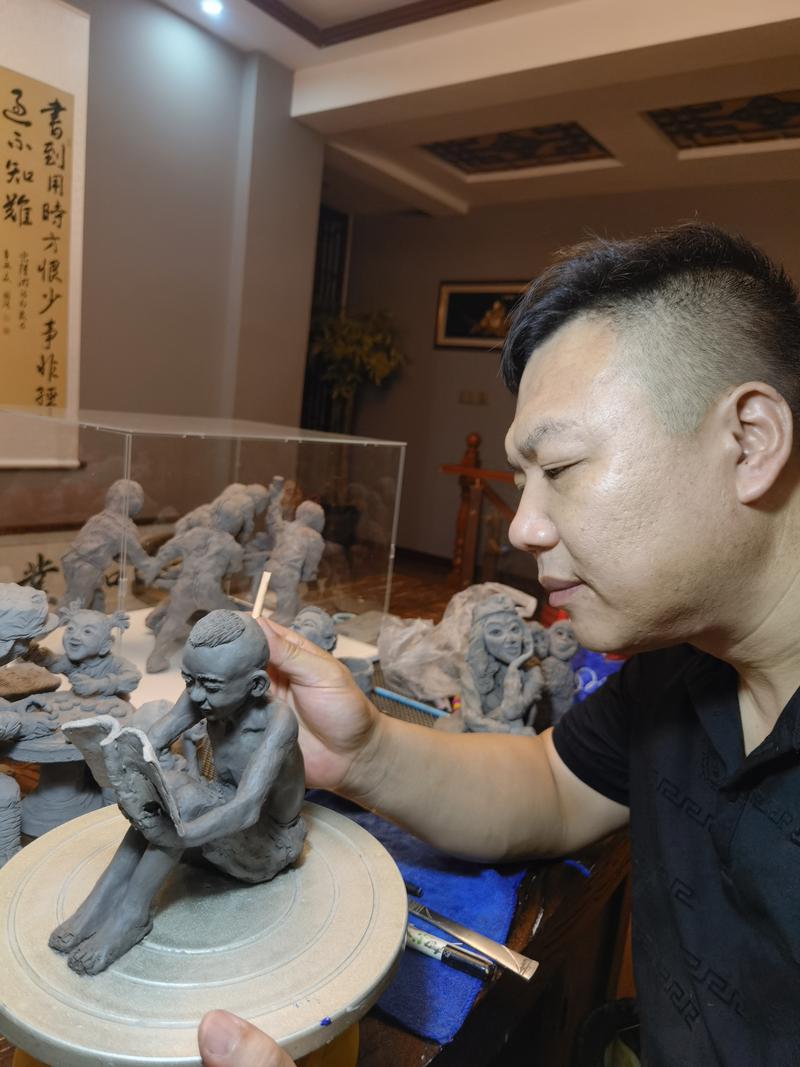 Yan works on a sculpture of a boy reading. (PHOTO PROVIDED TO CHINA DAILY)
Yan works on a sculpture of a boy reading. (PHOTO PROVIDED TO CHINA DAILY)
Yan recalls that, at the age of 14, he molded the figure of a child by himself. Upon seeing it, his father was amazed that he could make such a good figurine at a young age and started teaching him how to sculpt all kinds of human figures.
"I have always been sensitive to people's facial and bodily expressions. Often when I speak to people, or simply walk on the street or inside a market, I'll observe people's expressions, body language and movements. When I see something interesting, I want to embody it through sculpture," Yan says.
A lot of Yan's work draws inspiration from his own life experiences or his everyday observations.
One particular sculpture that he holds dear, Visiting the Relatives, depicts a scene from his childhood, where his father can be seen riding a bicycle, carrying his mother and four small children, to visit relatives during Spring Festival.
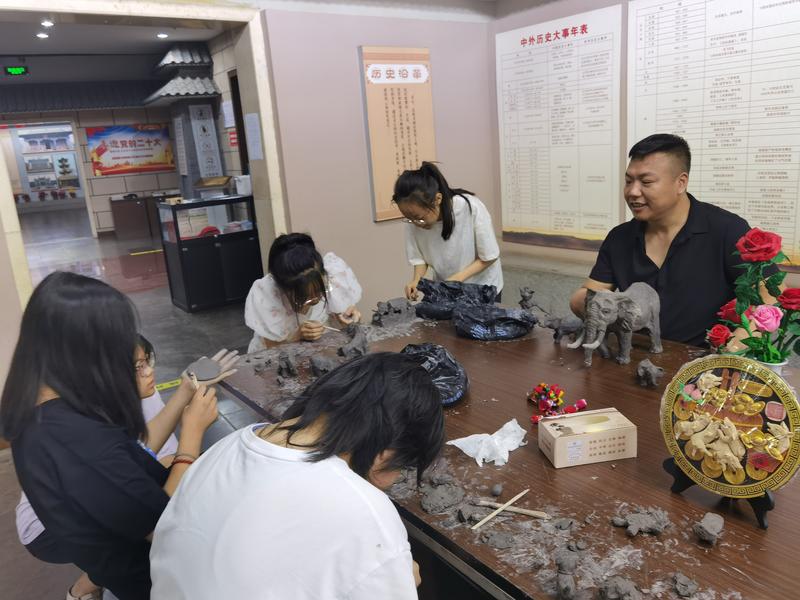 Yan often gives workshops for students at local museums and cultural centers. (PHOTO PROVIDED TO CHINA DAILY)
Yan often gives workshops for students at local museums and cultural centers. (PHOTO PROVIDED TO CHINA DAILY)
Since he posted about this sculpture in a short video, it has garnered more than 5,000 likes on Douyin, the Chinese iteration of TikTok, becoming one of his most popular videos.
"Your skills are getting increasingly advanced and exquisite," one comment says. "The gleaming eyes vividly reflect the joy of being in a big happy family. Seeing it makes me feel like I am back in my childhood, sitting on a bicycle and enjoying the wind passing by."
He also highlights regional culture with his creations, depicting, for example, the ancient Shanxi merchants engaging in commerce, and making miniatures of local historical sites, including the Wang Family Compound and the Ancient City of Pingyao.
Another example of this is a sculpture portraying the folk storytellers of yore, who roamed the villages and told stories while playing folk instruments.
Yan brought this piece to a folk culture skills competition in July hosted by Jinzhong municipal bureau of culture and tourism and the Jinzhong cultural center. With this sculpture, and an on-the-spot creation depicting medical workers, Yan won the first prize at the competition.
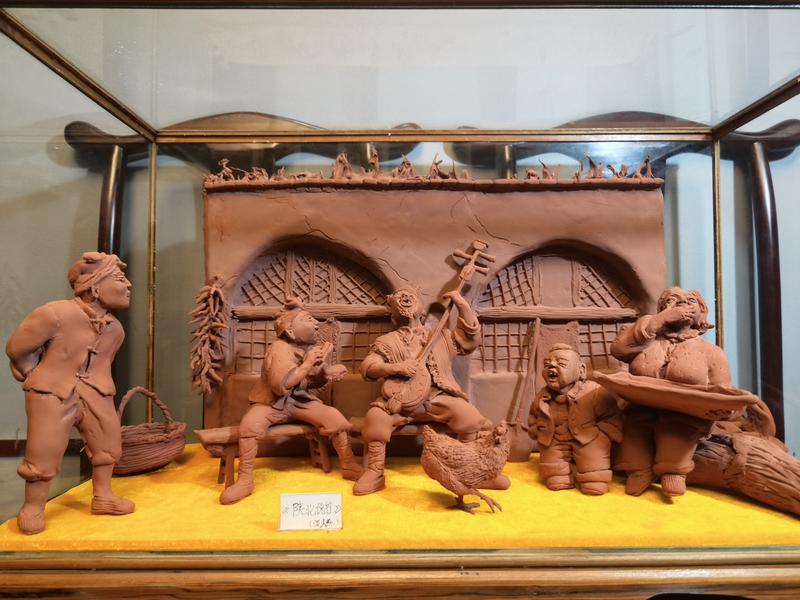 He won a Jinzhong folk culture skills competition in July with a piece depicting traditional storytellers. (PHOTO PROVIDED TO CHINA DAILY)
He won a Jinzhong folk culture skills competition in July with a piece depicting traditional storytellers. (PHOTO PROVIDED TO CHINA DAILY)
Recognition from art experts and professional critics at such competitions has given him motivation, Yan says.
When he was younger, there were times when he wanted to give up the craft altogether, mostly because the locals didn't value his work and scorned him for not having a stable job with a regular income.
He says that at times like those, it was the constant encouragement from his father and the support of local authorities that drove him to carry on.
Now, apart from the conventional clay sculpting, Yan has been innovating the art form by combining it with painting and relief sculpture.
"I also paint some gouache and traditional Chinese paintings. So, I thought I could combine clay sculpture with painting and give the pictures a three-dimensional effect. After much thought, I plastered the clay onto the wall, molded it into shapes of mountains and rivers and painted colors on them. The final effect is amazing," he says.
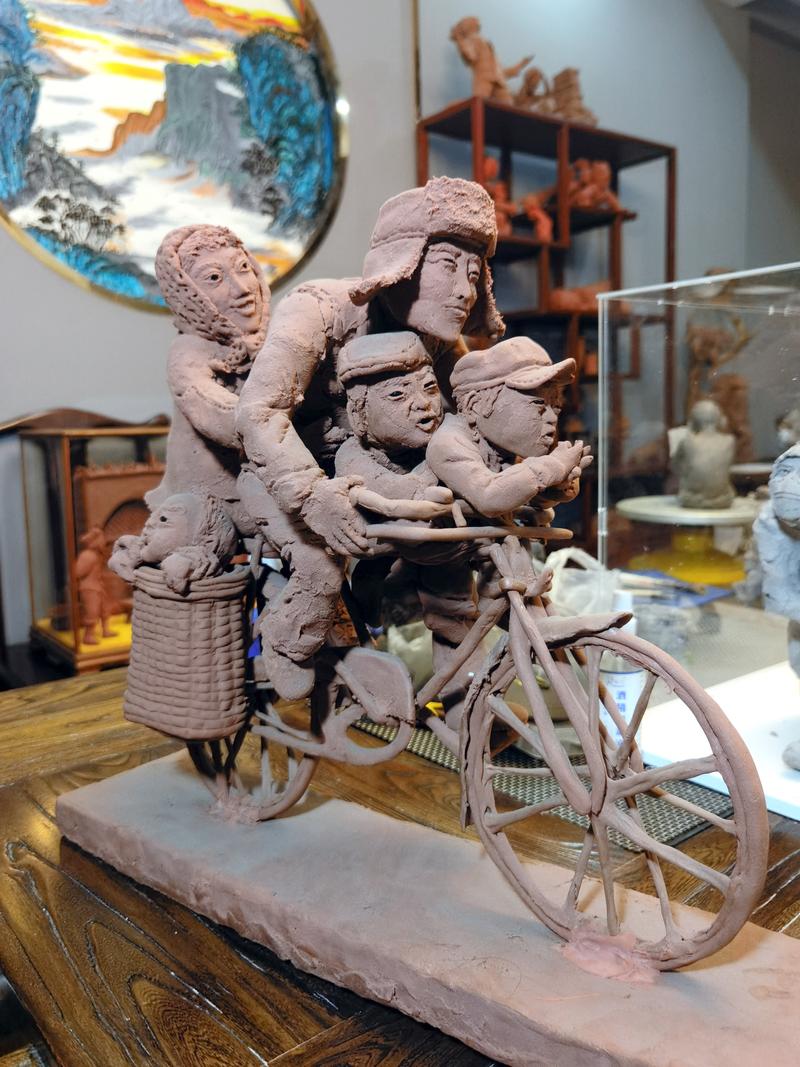 Yan Huaqiang's clay sculpture, Visiting the Relatives. (PHOTO PROVIDED TO CHINA DAILY)
Yan Huaqiang's clay sculpture, Visiting the Relatives. (PHOTO PROVIDED TO CHINA DAILY)
Yan now has six students learning clay sculpting. The youngest two are middle school students and the eldest is a man in his 50s with a background in traditional Chinese painting. Despite the age differences, they all actively sought him out.
"Clay sculpting is only for those with an innate interest. They must have the willingness to learn and a talent for it. It's difficult to force anyone into learning the art form, but those who have an affinity with it can acquire the skills very smoothly," Yan says.
For his own children, he has not insisted on passing down the art form. But recently, after seeing his young daughter take an interest in the craft, he has been offering her guidance.
He is also often invited to give workshops at local museums, cultural centers and schools, and he attends in the hope of finding more young people who are interested in learning the skill and passing down this traditional cultural art form.
Contact the writers at chengyuezhu@chinadaily.com.cn


